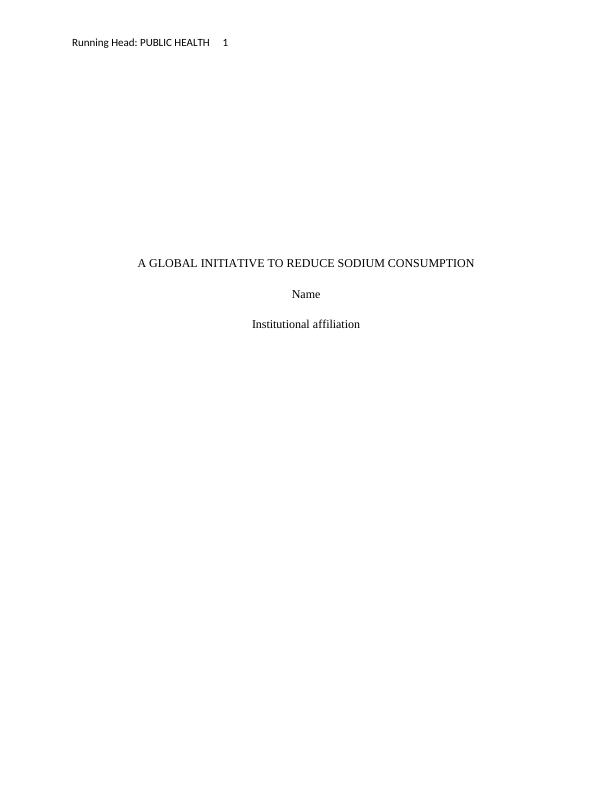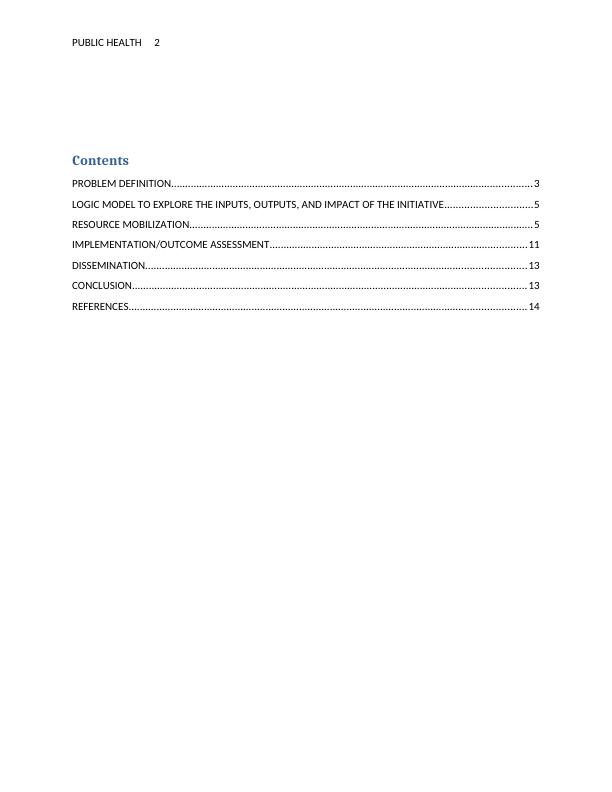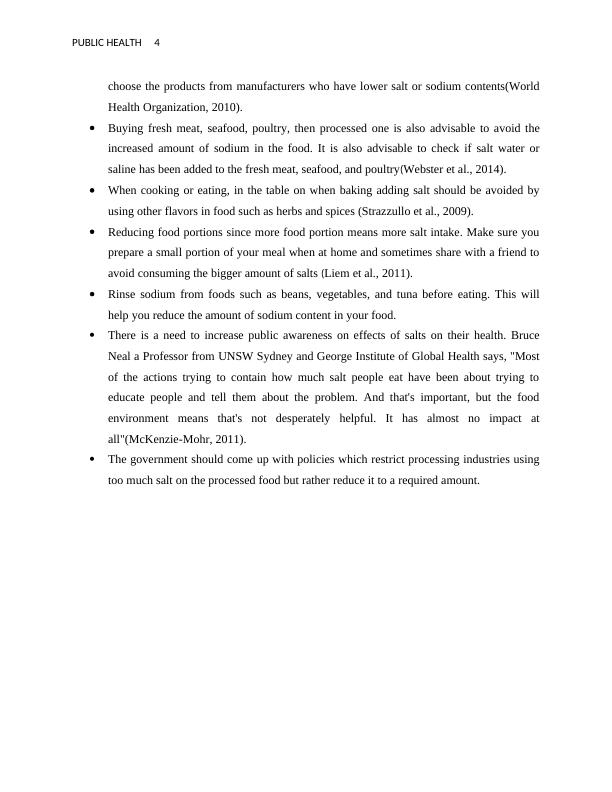(PDF) Salt Reduction Initiatives around the World
16 Pages4933 Words59 Views
Added on 2021-06-15
(PDF) Salt Reduction Initiatives around the World
Added on 2021-06-15
ShareRelated Documents
Running Head: PUBLIC HEALTH 1A GLOBAL INITIATIVE TO REDUCE SODIUM CONSUMPTIONNameInstitutional affiliation

PUBLIC HEALTH 2ContentsPROBLEM DEFINITION.................................................................................................................................3LOGIC MODEL TO EXPLORE THE INPUTS, OUTPUTS, AND IMPACT OF THE INITIATIVE...............................5RESOURCE MOBILIZATION...........................................................................................................................5IMPLEMENTATION/OUTCOME ASSESSMENT............................................................................................11DISSEMINATION........................................................................................................................................13CONCLUSION.............................................................................................................................................13REFERENCES..............................................................................................................................................14

PUBLIC HEALTH 3PROBLEM DEFINITIONHigh dietary salt consumption has been linked to harmful effects such as increased risk ofstroke due to heightened blood pressure, renal disease, and ventricular left hypertrophy. Thereare studies that relate salt intake with obesity, with osteoporosis and renal stones and also as acause of stomach cancer (Wyness et al., 2012). Because excessive salt consumption is known tocontribute to these non-communicable diseases, the world is looking for ways to reduce saltintake. Studies have shown that there are 36million deaths caused by non-communicablediseases around the world which include cancer, diabetes, cardiovascular disease(CVDandchronic lung diseases (He et al., 2014). This accounts for close to two-thirds of anapproximated 56 million deaths around the world among per year. CVDs the group of conditionsleading to deaths globally with an estimated 17.5 million people having have died from CVDs in2005 (He et al., 2014). Low-and middle-income countries have over 80% of the estimated deathsfrom CVD (He et al., 2015). Description of the solution for the problem It has been assumed that use of salt shaker when eating is one of the greatest contributors toincreased salt levels in your diet (Joffres et al., 2013). This, however, is not true, as packaged andrestaurant foods contribute 75% of dietary sodium with only 11% contributed with additionwhen eating or cooking(Webster et al., 2014). Sodium exists in foods when purchase them andthis may be reduced in the following ways: with over 1.65 million people dying every year ofCVDs, there is a need for the stakeholders to look for all ways to fight this problem(Strazzullo et al., 2009). Improper usage of the salt is the problem as opposed to the useof salt alone and this gives the reason why the world struggles with this problem since the 1970s(Petersen., 2009). Reading the nutrition facts label would help to reduce salt intake as one is able todetermine the amount present in the beverage or processed food. This would allow one to

PUBLIC HEALTH 4choose the products from manufacturers who have lower salt or sodium contents(WorldHealth Organization, 2010). Buying fresh meat, seafood, poultry, then processed one is also advisable to avoid theincreased amount of sodium in the food. It is also advisable to check if salt water orsaline has been added to the fresh meat, seafood, and poultry(Webster et al., 2014). When cooking or eating, in the table on when baking adding salt should be avoided byusing other flavors in food such as herbs and spices (Strazzullo et al., 2009).Reducing food portions since more food portion means more salt intake. Make sure youprepare a small portion of your meal when at home and sometimes share with a friend toavoid consuming the bigger amount of salts (Liem et al., 2011). Rinse sodium from foods such as beans, vegetables, and tuna before eating. This willhelp you reduce the amount of sodium content in your food. There is a need to increase public awareness on effects of salts on their health. BruceNeal a Professor from UNSW Sydney and George Institute of Global Health says, "Mostof the actions trying to contain how much salt people eat have been about trying toeducate people and tell them about the problem. And that's important, but the foodenvironment means that's not desperately helpful. It has almost no impact atall"(McKenzie-Mohr, 2011).The government should come up with policies which restrict processing industries usingtoo much salt on the processed food but rather reduce it to a required amount.

End of preview
Want to access all the pages? Upload your documents or become a member.
Related Documents
Strategies for Salt Reduction in Australialg...
|12
|2856
|310
Public Health - Assignment (Doc)lg...
|18
|4344
|112
Mediterranean Diet for Cardiovascular Disease | Reportlg...
|14
|4473
|13
Reducing Salt Intake for Better Cardiovascular Healthlg...
|11
|3325
|255
Nutrition And Therapy Assesment Reportlg...
|7
|1553
|25
Reflecting Dr. Rath’s publications on the effects of ultra-processed foodslg...
|7
|1857
|384
